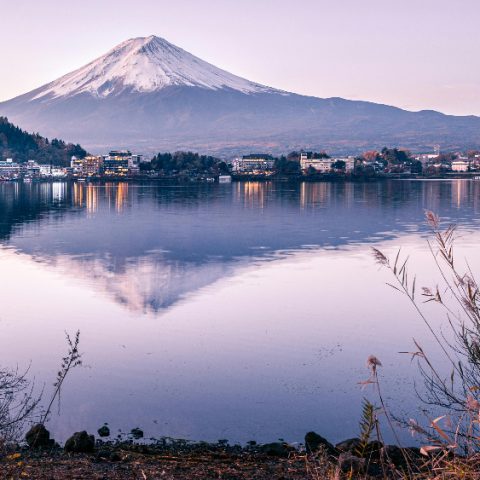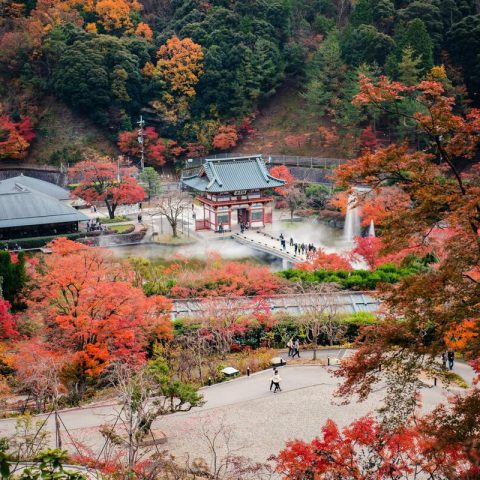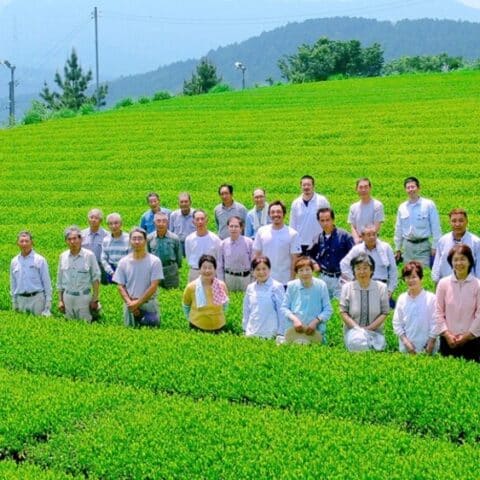
Tokyo is a wonderful place to enjoy the exceptional adventures that are only possible in a large metropolitan center with a seemingly endless range of globally influenced food, art, and culture available 24/7. After spending a few days in a dense concentration of urban opportunity, visitors sometimes also like to seek experiences that feel distinctly Japanese at a slower pace. If you’d like to balance a brief visit to Tokyo with a chance to see the landscape outside of the city, we recommend a short trip to the nearby tea country. Though there are many well-known tea-tasting opportunities in Japan, such as in Kyoto prefecture or Kagoshima, two of the biggest tea regions in Japan, these locations are further afield. If you’re short on time, it’s still possible to have an authentic and in-depth tea experience with a short train ride from Tokyo to Shizuoka, a major tea-producing region.
Today we’ll offer some tips if you have a day or two to spare on your trip to enjoy a nearby adventure in the heart of Shizuoka’s tea country, Suruga.

Tea Pairing at Kakuya Bessho – Photo credit: Suruga Marketing & Tourism Bureau
TO THE WEST OF TOKYO: SHIZUOKA PREFECTURE
If you can only visit one tea region during your trip to Japan, you can still go with one of the biggest! Shizuoka is the second most popular tea-growing region in Japan (after Kagoshima) and it’s just two prefectures away from Tokyo. While visiting Shizuoka, you’ll see views of Mount Fuji paired with ocean landscapes and have ample opportunities to sample local seafood alongside some of Japan’s freshest green tea. Everything in Shizuoka is about this amazing drink. Read more about Shizuoka’s tea world in our previous in-depth post, focused on tea in this special region.
Before setting out for tea country, it’s important to note that harvesting season generally starts in early spring (April) and ends in August. So, if you’re visiting Japan during these months, it’s the perfect time to visit the tea fields and try harvesting leaves for yourself. If you happen to visit during a different time of the year, there will still be many tasting opportunities available and tea-related experiences to enjoy.

Tea and Sake at No-age Concentre – Photo credit: Suruga Marketing & Tourism Bureau
LANDSCAPE HISTORY AND CLIMATE
Suruga is actually the older name for a section of today’s Shizuoka Prefecture. Within this region, there are five main cities and two towns that comprise the tea region: Shizuoka, Fujieda, Shimada, Makinohara, Yaizu, Kawane-Honmachi, and Yoshida, each with their own unique tasting profile, influenced by the geographic location (or terroir). The mountains, rivers, and foggy bay of Shizuoka all influence the tea of this area, making it into the special beverage that it is, and can only be, here.

Tea Pairing at Kakuya Bessho – Photo credit: Suruga Marketing & Tourism Bureau
DOWNTOWN TEA
Upon arrival in Shizuoka’s downtown region, you can taste tea at countless shops, purchase a drink to enjoy at home, and savor tea-infused confections and treats. If you’d like to learn some background history about this notable tea region, you might also enjoy visiting the local Tea Museum Shizuoka.

Matcha Calligraphy Photo credit – Suruga Marketing & Tourism Bureau
HEAD FOR THE FIELDS: MOUNTAINS, RIVERS AND BAY
One great option is to venture into the mountains to experience tea. The mountainous region is known for lightly steamed tea, fed by clear, healthy streams. Here, we recommend trying gyokuro at Gyokuro no Sato for an especially savory and umami-filled tea experience. If you’d like to try a wider range of teas, try Green Eight Cafe, boasting 12 kinds of green tea(!), or Kanebun Tea Farm. While visiting a tea farm you can also learn directly from the local growers about their hard work and multi-generation long practices.

Photo Credit: Visit Suruga
If you’d prefer to base your tea experience near the bay, try visiting Makinohara Yamamotoen. The Bay Area’s version enjoys longer hours of sunlight and produces a wonderfully rich deep-steamed green tea (called Fukamushi). Some of the most well-known tea from the Bay is called Makinohara.

Photo credit: Shimada City
If the river area is more appealing, head for Shimada or Kawane. The tea from these areas benefits from the changing temperatures that occur between day, night, and the morning mists. In Kawane, we recommend Yamakasho Tea Farm, whose tour ends with sipping tea on the veranda of a traditional Japanese house. An exceptional tea learning experience is possible at Kanetou Miura Tea Farm in Shimada City, where they practice Shizuoka’s Traditional Tea-Grass Integrated System. With this method, Japanese silver grass and Sasa broadleaf bamboo are used as organic fertilizers in the fields. This traditional process was designated as a GIAHS (Globally Important Agricultural Heritage System) site in 2013.
NEARBY ADVENTURES: COASTAL BIKE RIDES AND SUSPENSION BRIDGE
While in the Shizuoka tea region, we also recommend enjoying the incredible outdoors that makes this such a spectacular place to visit any time of the year. There are opportunities to e-bike the coastline or among tea fields, sample the local seafood, and visit one of Japan’s most famous bridges near the Sumata Gorge — the Suspension Bridge of Dreams 夢の吊橋.
Whatever you do in Shizuoka, we know you’ll have a wonderful getaway and adventure outside the city. It’s a wonderful place to visit any time of year and offers bountiful tea-tasting reasons to visit. And, given its incredible natural surroundings, you won’t regret any stretch of time you spend here. Happy tasting!

Photo credit: Explore Shizuoka
The quickest way to get to Shizuoka (at the time of writing) is to take the JR Tokaido Shinkansen. It is around 60 minutes on the Hikari or 90 minutes on the Kodama (please note the Nozomui doesn’t stop in Shizuoka). From there, look for local trains or buses to your preferred tea experience destination.
Start in Suruga:
https://www.visit-suruga.com/en
https://www.visit-suruga.com/en/area
https://www.visit-suruga.com/en/category/taste-experience
Feature photo credit: Explore Shizuoka



